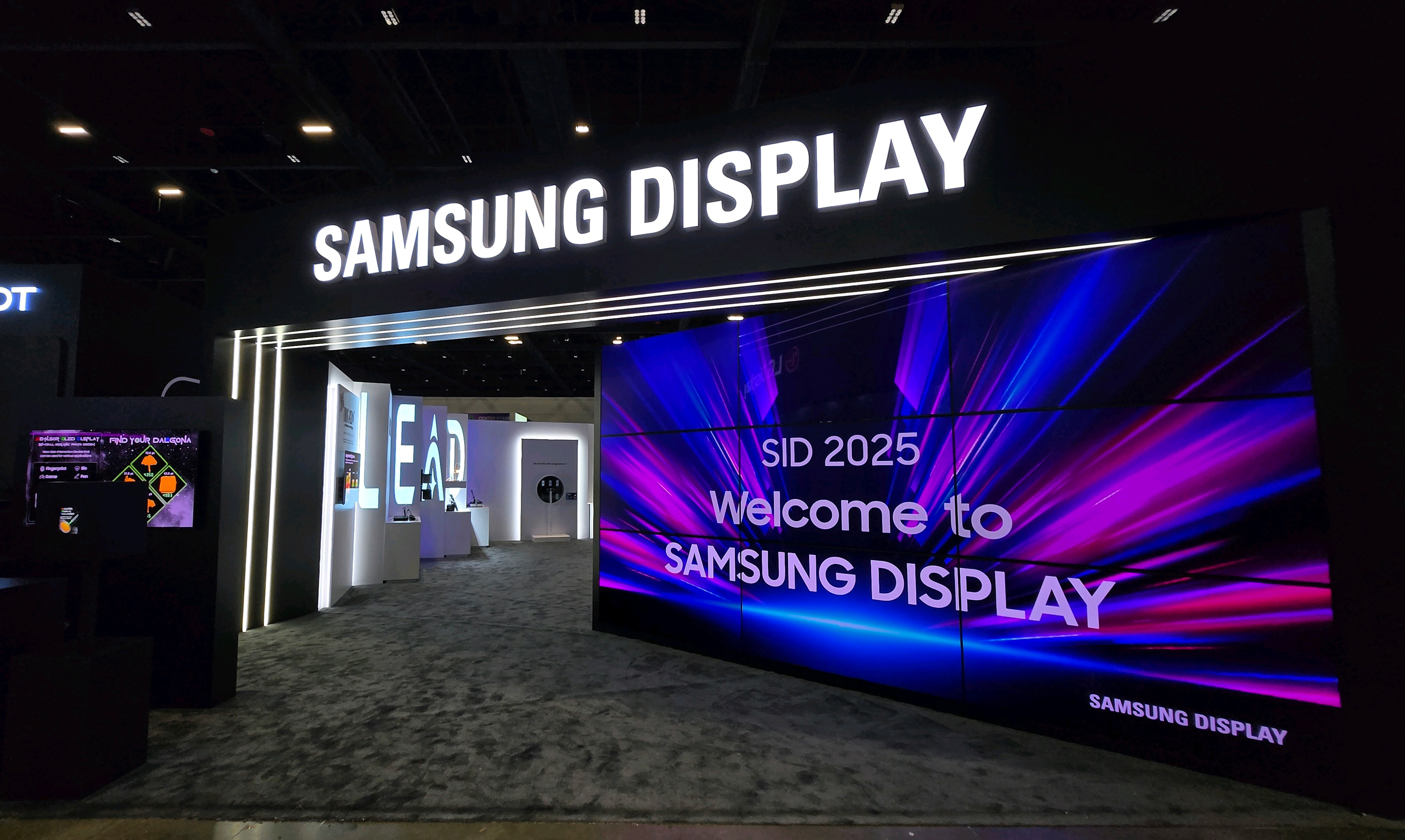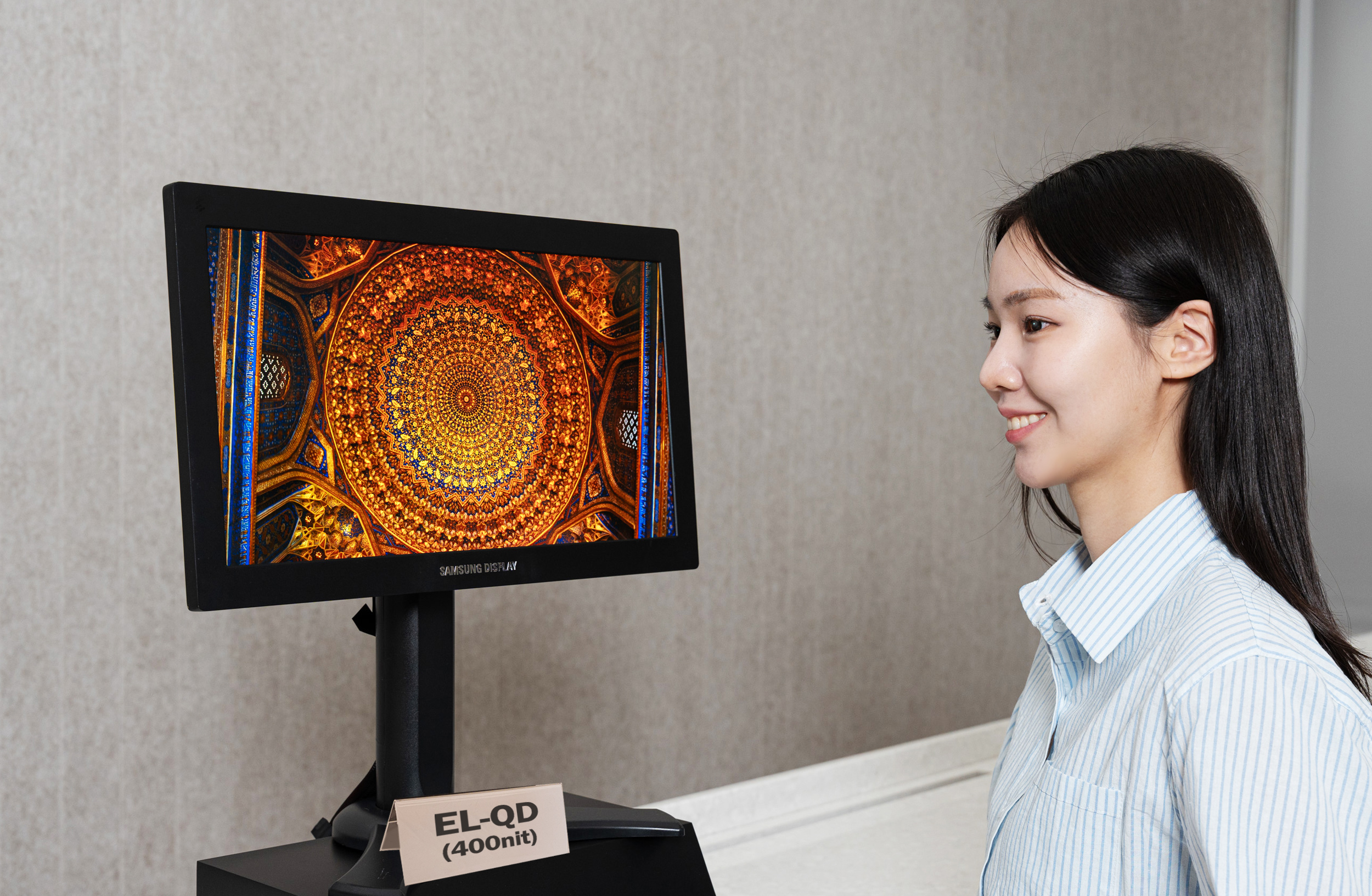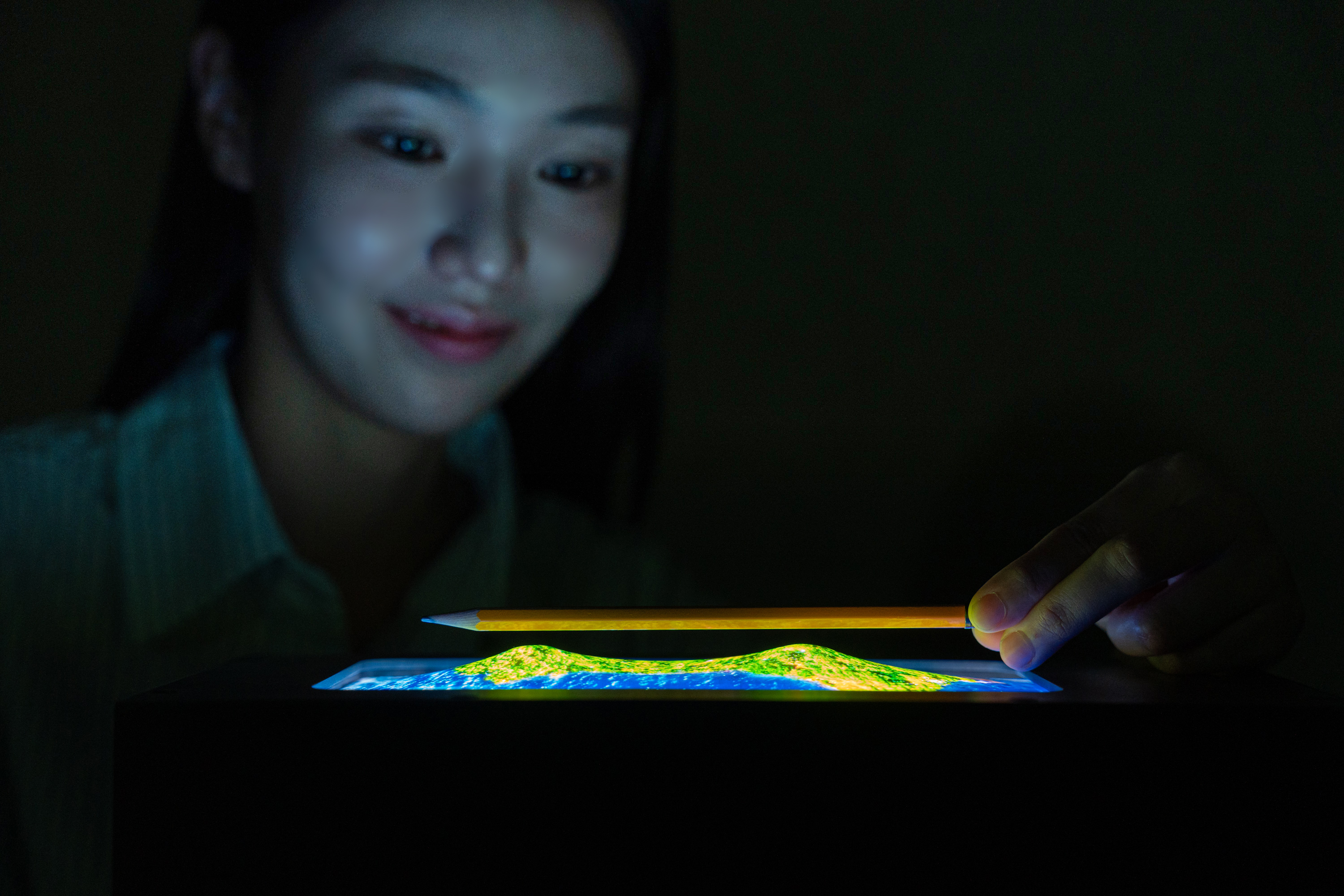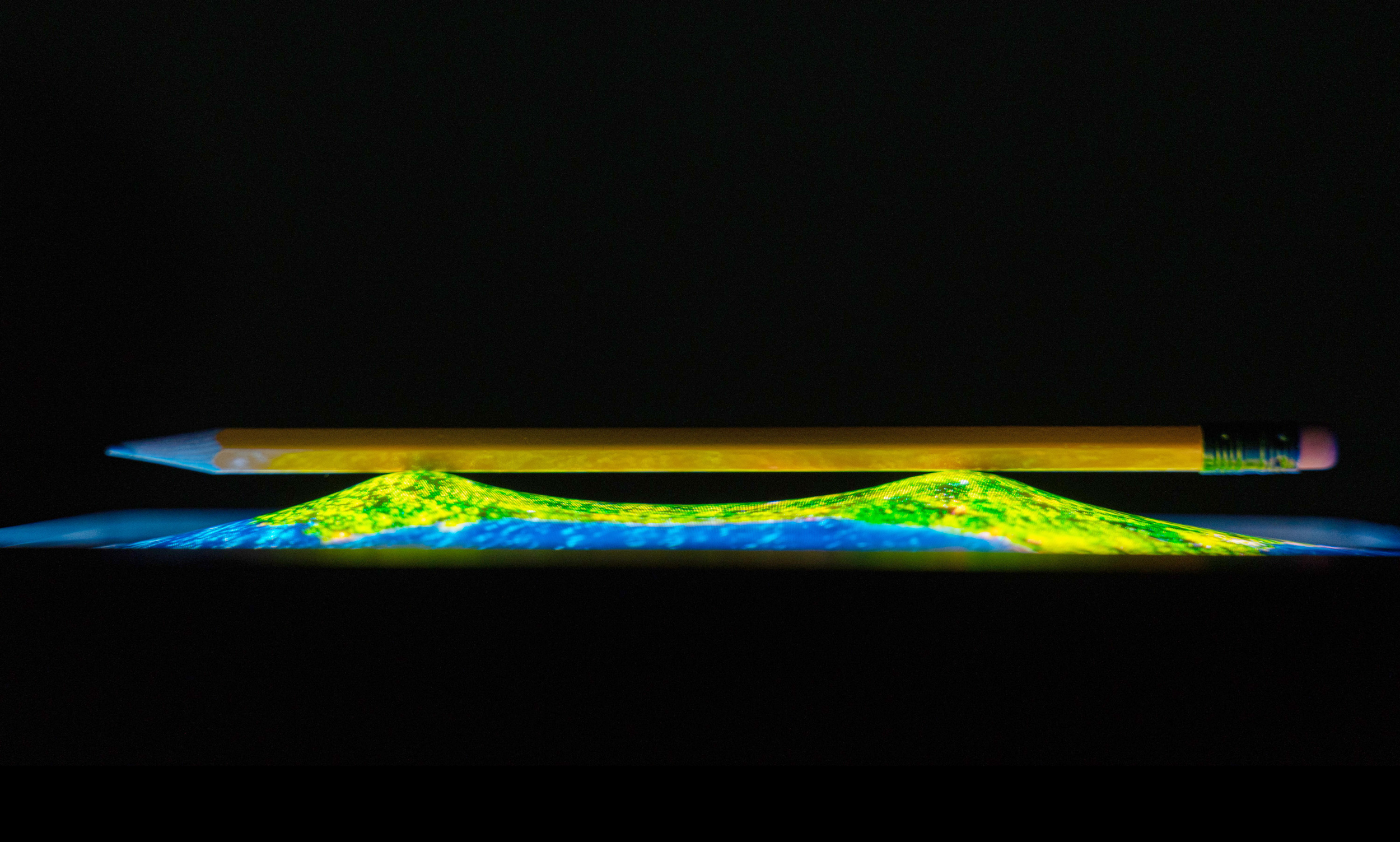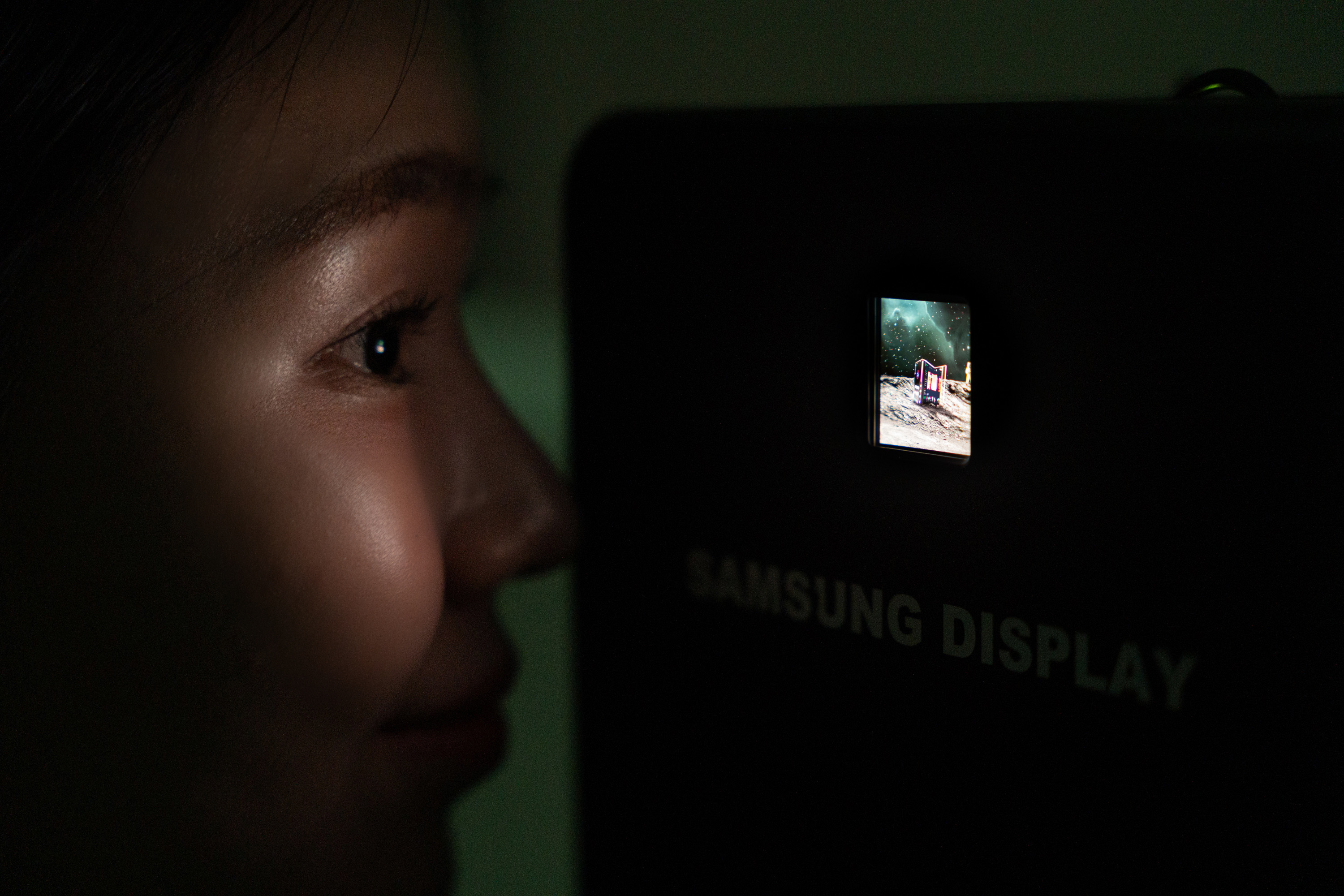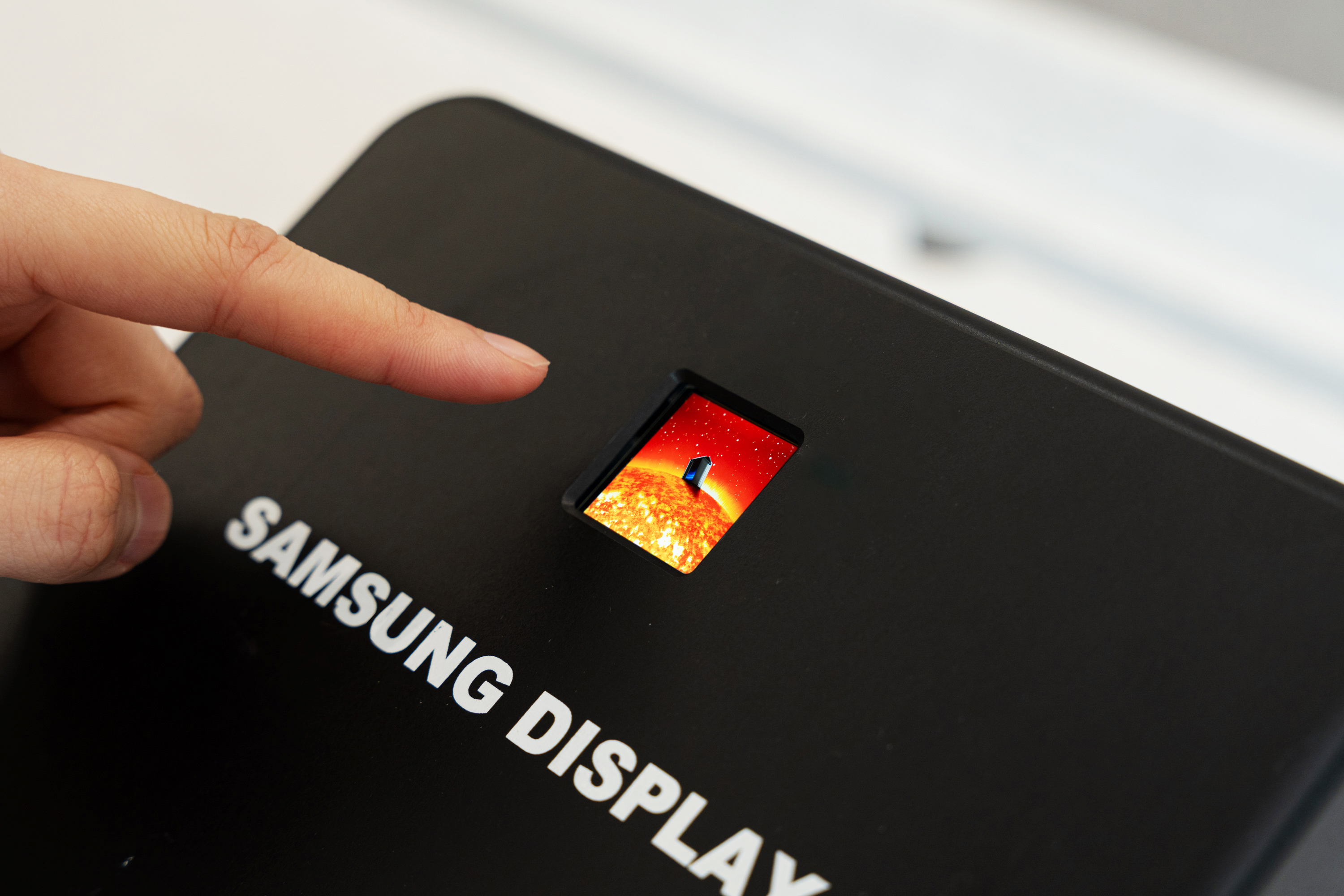- Samsung Display to take part in Display Week 2025, hosted by the Society for Information Display (SID)
- Company to display next generation display technologies including its significantly enhanced Electroluminescence Quantum Dot (EL-QD) prototypes, which received the “Distinguished Paper Award” from SID
- Sensor OLED Display technology, which was featured in international journal, Nature Communications, will also be on display.
- Cutting-edge form factors like a stretchable Micro LED screen that can wrap around spherical surfaces, a Flexible Briefcase display, and a Polygon Foldable display will also be on exhibit
SEOUL, May 13, 2025 — Samsung Display announced on May 13 that it will take part in Display Week 2025, held from May 13 to 15 at the McEnery Convention Center in San Jose, California.
The event, hosted by the Society for Information Display (SID), brings together display companies and experts from around the world to share cutting-edge technologies and R&D achievements.
Samsung Display is set to unveil a range of next-generation display technologies, including the industry’s first non-cadmium 400-nit EL-QD and a 5,000 pixels-per-inch (PPI) RGB OLED on Silicon (OLEDoS) at Display Week 2025, reinforcing its leadership in cutting-edge panel technology.
The company will also highlight its leadership in OLED innovation through a range of future-oriented technologies, including organic photodiodes (OPD), advanced sensors capable of measuring biometric data such as heart rate and blood pressure directly from light generated by a panel touched by a patient, and a high-resolution microdisplay that delivers 5,000 PPI in a compact 1.4-inch form factor.
“It is an honor to present Samsung Display’s advanced technologies at a global forum attended by the world’s leading scholars and industry experts,” said Changhee Lee, Executive Vice President and Head of the R&D Center at Samsung Display. “We remain committed to shaping the future of display innovation by closely engaging with academia and the market and by being the first to deliver the solutions our customers demand.”
□ EL-QD Prototype Achieves 50% Higher Brightness, High Resolution EL-QD Inkjet Printing Technology Earns SID “Distinguished Paper Award”
At this year’s SID 2025 exhibition, Samsung Display will showcase its significantly enhanced EL-QD prototypes. Known as the ultimate quantum-dot display, EL-QD is a next-generation inorganic electroluminescent technology. Samsung Display first unveiled the technology under the name “QD-LED” at SID 2024, drawing strong interest from the academic community.
Unlike current QD-OLED displays, which use photoluminescence to emit light — where OLED-generated light passes through a QD color conversion layer — EL-QD uses electroluminescence, enabling each RGB pixel composed entirely of quantum dots to emit light directly in response to electrical signals. This method maximizes QD’s inherent advantage in color accuracy while also reducing power consumption.
Samsung Display’s latest EL-QD prototypes include a 400-nit high-brightness version and a 264 PPI high-resolution version. The high-brightness model improves on last year’s prototype (250 nits) by more than 50%, achieving the highest luminance among all EL-QD prototypes disclosed to date. The lifespan of blue materials, which has been a key industry challenge to commercializing EL-QD, was dramatically increased to allow for such breakthroughs in EL-QD technology. It has long been believed that cadmium-free QDs face durability limitations, but Samsung Display has once again achieved a meaningful technological leap.
The new high-resolution prototype boasts a pixel density of 264 PPI, up from 202 PPI last year. This improvement was made possible by enhancing ink properties and improving compatibility with inkjet printing processes. The accomplishment earned Samsung Display’s research team recognition from SID as a “Distinguished Paper” for 2025.
□ Sensor OLED Display Featured in Nature Communications Enables Fingerprint and Health Monitoring Across the Entire Screen
Earlier this year, Samsung Display’s Sensor OLED Display technology, which was featured in the international scientific journal, Nature Communications, will be presented as a prototype at the exhibition for attendees to experience in person. This groundbreaking innovation allows fingerprint recognition and cardiovascular health monitoring across the entire screen surface — a pioneering innovation from Samsung Display.
Unlike conventional fingerprint sensors, which are mounted beneath the panel as separate modules, Samsung Display has integrated OPD directly during the OLED deposition process, embedding the sensors into the panel itself. This enables the panel to detect fingerprints anywhere on the screen, as well as measure biometric data such as heart rate, blood pressure and stress levels. This technology is based on how OLED light reflects differently depending on the contraction and relaxation of blood vessels, which the OPD then converts into health information.
Visitors to the exhibition can experience this innovation through an interactive “digital dalgona game,” where shapes are carved out on screen using laser light instead of needles. The game demonstrates how the panel detects input not by touch, but by recognizing light signals, providing an engaging showcase of Samsung Display’s next-generation sensing technology.
□ RGB OLEDoS with Industry-Leading 5,000 PPI Resolution Makes Its Debut
Samsung Display will also unveil its industry-leading 5,000 PPI RGB OLEDoS for the first time at this year’s exhibition. In its compact 1.4-inch size — roughly equivalent to the size of a standard smartwatch screen — the display delivers higher resolution than an 8K TV. Designed for next-generation extended reality (XR) devices, it boasts ultra-high resolution alongside peak brightness of up to 15,000 nits, a 120 Hz refresh rate, and up to 99% color gamut coverage (DCI-P3 standard).
The company will also debut a groundbreaking RGB OLEDoS panel with a peak brightness of 20,000 nits and 4,200 PPI — marking the industry’s highest luminance in an RGB OLEDoS to date. Samsung Display previously introduced a 5,000-nit version at SID 2024 and a 10,000-nit version at CES 2025, making this newest model its most advanced yet.
OLEDoS is an ultra-high-resolution display technology that deposits organic materials directly onto a silicon wafer, enabling pixel sizes as small as tens of micrometers. It plays a central role in XR headsets and is categorized into two types: RGB OLEDoS and White OLEDoS. RGB OLEDoS creates colors using individually deposited red, green and blue OLED subpixels without color filter, resulting in wide color range and distortion-free viewing from any angle, while White OLEDoS uses a white OLED light source combined with RGB color filters to produce color.
□ Cutting-Edge Form Factors on Full Display
A range of innovative form factor products will also be on display, including the multi axis stretchable display based on the company's Micro-LED technology, unveiled last year. This display enables new user experiences by allowing the high-resolution screen to protrude in three dimensions or pop out like a hemisphere. Samsung Display will present a new demonstration using a 3D map concept, where two areas of the stretchable display will protrude simultaneously.
Also featured are concept products that drew attention at MWC 2025 earlier this year, including the “Flexible Briefcase” and “Polygon Foldable.” The Flexible Briefcase features an 18.1-inch foldable OLED that folds in half and incorporates a handle for portability. While unfolded, it offers a large 18.1-inch display — about the size of two tablets — providing ample screen space, and when folded it assumes a compact, briefcase-like form.
The Polygon Foldable is a unique design that uses a 3.38-inch trapezoidal-shaped OLED, departing from conventional rectangular formats. It is designed for the external display of a flip-type foldable phone and was made possible by Samsung Display’s advanced laser cutting technology.
